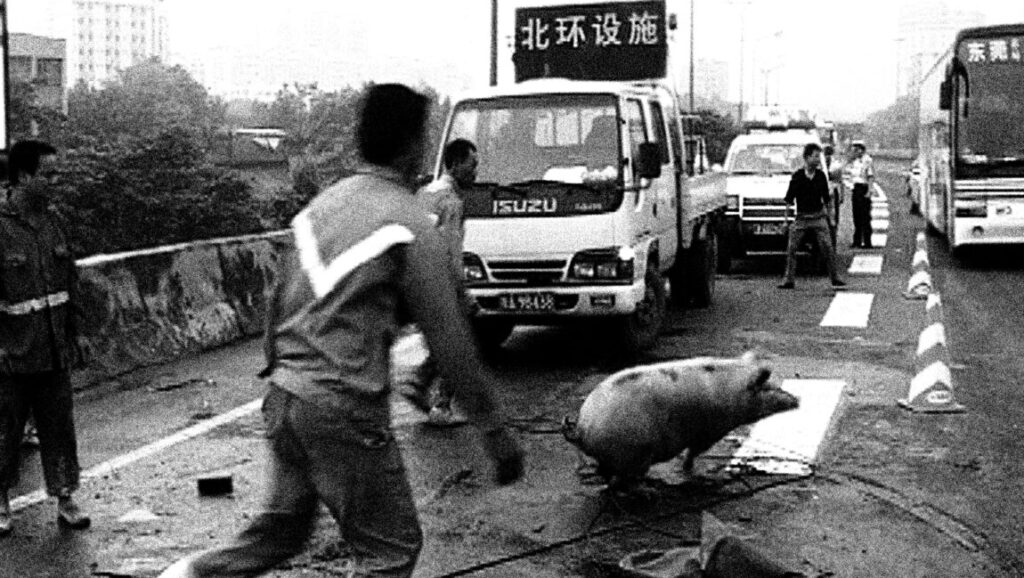If we’re talking about a “golden age of documentaries,” as many seem to be doing these days, then we really should be talking more about the recent influx of documentaries coming out of China. With the Communist Chinese government as repressive as it is, more filmmakers there are turning to the documentary form to catalog and explore the various injustices and inequalities they see in their society, among other subjects. Even better, these filmmakers are bringing their own distinctive personal visions to bear.
From Wang Bing’s West of the Tracks, a nine-hour immersion into life in an industrial wasteland in Shenyang, to Zhao Liang’s Petition, a legal procedural that gradually transforms into a self-reflexive meditation on documentary ethics, these films vary wildly in scope, style and thematic intrigue. But all are united by an activist’s passion and an artist’s curiosity about human experience.
Chinese documentaries are getting their moment at New York’s Museum of Modern Art thanks to Chinese Realities/Documentary Visions, a wide-ranging series that tracks this cinematic movement all the way back to 1988 (just before the notorious Tiananmen Square incident in 1989). Perhaps a couple of the titles will be somewhat familiar to Western audiences: Zhang Yimou’s The Story of Qiu Ju, and Jia Zhangke’s more recent 24 City. But many of these haven’t been shown widely, barring the occasional film festival exhibition.
Chinese documentaries are getting their moment at New York’s Museum of Modern Art thanks to Chinese Realities/Documentary Visions, a wide-ranging series that tracks this cinematic movement all the way back to 1988
For those who are willing to explore outside the boundaries of fest-approved Chinese cinema, this series will offer many opportunities to make fascinating discoveries. There are many titles in this line-up that I myself have never even heard of, especially really early like Wu Wenguang’s Bumming in Beijing: The Last Dreamers, a film seemingly considered Ground Zero for China’s independent documentary movement.
There is one film in the series, however, that New Yorkers are urged to go check out if they haven’t already (it played for one weekend a couple years ago at Anthology Film Archives): Disorder, a 2009 documentary by Huang Weikai that is among the most formally innovative and visionary works of cinematic non-fiction to come along in recent years.
Somewhat like Leviathan, Lucien Castaing-Taylor and Verena Paravel’s astonishing fishing-boat documentary from earlier this year, Disorder is culled entirely from footage—but whereas the cameras in Leviathan were attached to creatures and objects, Huang’s footage comes from amateur videographers (in other words, Huang beat Kevin MacDonald and his amateur-video assemblage Life in a Day by a good two years). Whatever the source, Disorder exudes the sensibilities of true artists, shaping existing footage into a distinctive, coherent, personal vision.
The title of Huang’s film suggests the environment he’s trying to convey—that of a society in various states of disarray—but not quite the details, both visual and sociological. Disorder begins with a 10-minute prologue that intercuts between five different incidents, among them a hit-and-run victim that’s bribed by the perpetrators to leave the scene, and a frenzied mob emptying out a convenience store. One may initially think the film is merely going to continue to be about these kinds of moments of urban inhumanity—but then, after its title card, Huang begins to fill in the details of his anti-city symphony in ways that are both pointed and unbelievably surreal.
Huang orchestrates all of this into a 59-minute barrage of that takes the pulse of a society teetering on the edge of a moral abyss. It never quite falls in, but there’s no reason not to think, as the film cuts to black and the sounds of a noisy crowd remain, that it won’t do so in the fullness of time.
At the risk of oversimplification, the film’s overarching concept is its detailing of a trickle-down systematic breakdown. We may see a lot of policemen in Disorder, but most ineffectual at best, not even powerful enough to stop jaywalkers or even pigs from disrupting traffic. But the domestic unrest cuts deeper than such acts of indifferent nature and civil disobedience. One man who threatens to jump off a bridge complains about not being properly compensated at his job; another plot thread features the sight of government officials being forced to wade into a polluted river themselves. Worse, such dissatisfaction may well be reflected in the general populace. Perhaps that explains why all those random passersby seem to ignore that poor abandoned baby in the park; the one person who does gesture to help feels a need to ask if she should bring this to the attention of the police. Something seems rotten in China if this is something that needs to legitimately be asked.
All of this is depicted through unabashedly rough black-and-white footage, which merely adds to the sense of gritty hyper-reality; “stranger than fiction” has rarely been made so visceral. There are moments in Disorder that transcend mere documentation, most memorably a poetic image of a cat chasing after a mouse in a garbage heap, arguably the most brutally beautiful sequence of its kind since the children playing with scorpions in Sam Peckinpah’s The Wild Bunch. Huang orchestrates all of this into a 59-minute barrage of that takes the pulse of a society teetering on the edge of a moral abyss. It never quite falls in, but there’s no reason not to think, as the film cuts to black and the sounds of a noisy crowd remain, that it won’t do so in the fullness of time.

